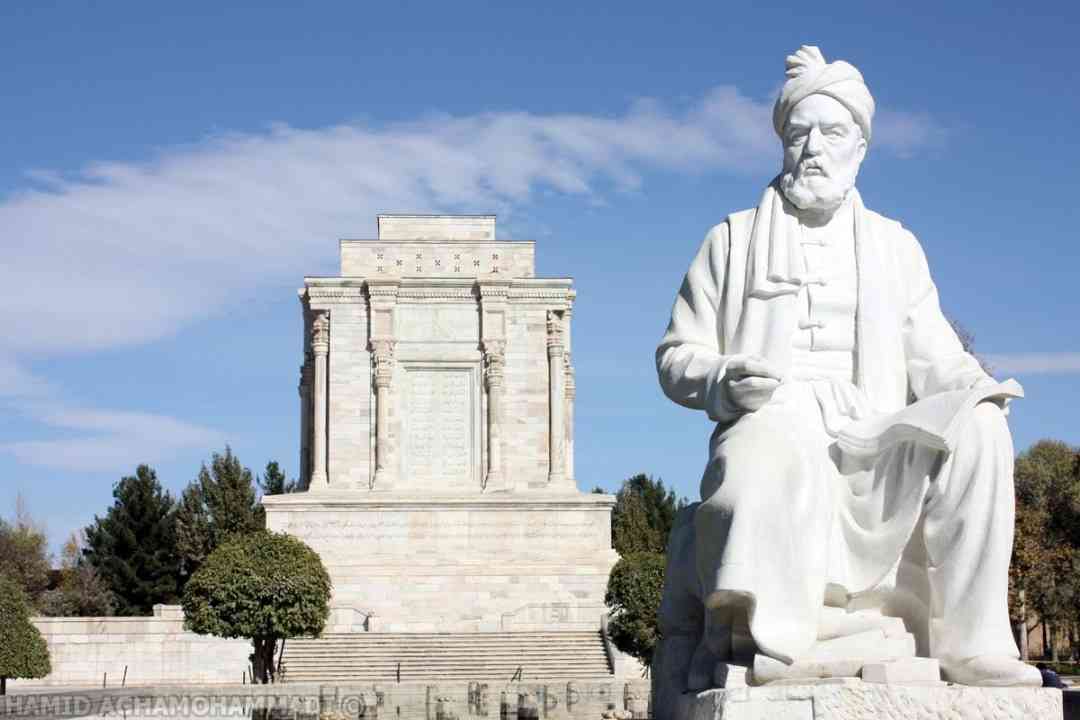Not being confined to a particular region, Persian literature has had a great influence on world literature helping us understand the ancient history of the world.
One of the most important and outstanding Iranian literary works is “Shahnameh” (lit. The Book of Kings), which is a long epic poem written by the Persian poet Ferdowsi between 977 and 1010 CE and is considered a national epic. Consisting of some 50,000 verses, Shahnameh is the world’s longest epic poem written by a single poet.
This literary masterpiece includes the mythological, legendary, and, historical past of the Persian Empire from the time of the creation of the world until the advent of Islam in Iran.
As a great work in the area of culture and civilization, Shahnameh represents the strengths and uniqueness of Persian literature and has, therefore been translated several times into other languages.
According to Maryam Kouhestani, a Professor of Comparative Literature at the Imam Reza University of Mashhad, although not much information is available on Ferdowsi’s life and biography, the linguistic structure and the cultural-historical context of Shahnameh reveals that he had sufficient knowledge of the ancient history of Persia and this inspired him to compose Shahnameh. He was also familiar with Arabic poetry, as well as the Pahlavi language. Ferdowsi started writing the Shahnameh about 977 AD and completed it in the year 1010 AD when he was 71 years old.
- Delta pays US$20m sugar tax in 9 months
- ‘Zim economy among the least free globally’
- Diamond workers launch strategic plan
- CBZ asset base rises 71% in Q3
- National Foods to explain shock VFEX delisting plan
According to Iraj Afshar, Shahnameh was translated 225 times into nearly 27 languages of the world by the year 1977. In 1886 Shahnameh was introduced as one of the 100 major literary masterpieces of the world. In Iran, May 25 is commemorated as Ferdowsi Day, and every year on this special day certain ceremonies and programs are held in honor of Ferdowsi and Shahnameh at universities and research institutions.
Shahnameh was first introduced to English readers by Sir William Jones (1746-94), who in his many essays on Oriental poetry compared Ferdowsi to Homer and claimed that it was through reading the Shahnameh, that he found the family of the Indo-European languages. He translated some parts of the Shahnameh into English, French, and Latin, and drew up a plan for a play based on the story of Rostam and Sohrab.
The first significant translation of Ferdowsi’s epic was prepared by Joseph Champion in Calcutta in 1785. In France, Louis-Mathieu Langlès, the first French Orientalist, was the pioneering translator who set out to turn episodes of the Shahnameh into French in 1778. James Atkinson (1780-1852) translated the story of Rostam and Sohrab in poetry and prose which is the first fully independent English version of Shahnameh, but not in the form of an epic narrative. His work “The Shahnameh of Persian Poet, Ferdowsi” was influenced by Romanticism and a free translation of Shahnameh.
One year after the publication of Rostam and Sohrab by Atkinson, Stephen Weston (1830-1747) privately published a small volume with excerpts from the Shahnameh in London. Another 19th-century translation of Shahnameh was by Samuel Robinson (1794-1884). On 24 December 1819, he read a paper on Ferdowsi in the Literary and Philosophical Society of Manchester, which in turn published Robinson’s paper in its Memoirs of the year 1819.
In 1810, Von Wallenberg began to translate some parts of Shahnameh but his work remained incomplete because of his death. Ampére published a paper about Shahnameh in two worlds and compared Shahnameh with Homer’s “Iliad” and “Odyssey”, and the Mahabharata, and Ramayana of India.
The first truly completed translation of the Shahnameh was prepared by the brothers Arthur George and Edmond Warner. They translated it in the form of blank verse, an epic style of poetry in English to be close to the original one. These brothers worked on the original copy which was in Persian but in some cases were not able to translate the aesthetic features and metaphorical expressions as the original one.
In 1907, Alexander Rogers translated “The Shahnameh of Ferdowsi”; a very free translation. This rendition of the critical events of the epic was published in 551 pages. Julius von Mohl was German and received his doctorate in philosophy from the University of Tübingen. He taught Persian at the School of Eastern Languages and was a student of Sylvester Düssy, and in 1826 the French government gave him the translation of the Shahnameh.
The translation of “Julius von Mohl” is still the most eminent translation and a complete version of Shahnameh. Mohl spent 28 years translating Shahnameh into French. This translation of Shahnameh was published in French in seven major volumes in Paris from 1838 to 1878 AD. This work affected European literature in the 19th century and many poets and writers, including Victor Hugo, François Coppée, Jules Lemaître, Maurice Barrès, and Max Müller were influenced by it.
Helen Zimmern (1846-1934) translated Shahnameh into English from the French version – Mohl’s translation of Shahnameh. She translated some of the major stories of Shahnameh in prose and in the form of a short story rather than an epic narrative. In 1859, Victor Hugo wrote “The Legend of the Ages” under the influence of the themes of the Shahnameh. Barbier de Meynard completed the translation of the Shahnameh after Julius von Mohl’s death. Adolf Avrial wrote a book comparing women of Shahnameh and European women. Abel Bunar (Contemporary French poet) wrote the book "Iranian Shahriar" in 1908.
Joseph Ernest Renan (French expert) in his book introduced Shahnameh as the great documentary genius and the creative power of the Aryan race. François Coppée (French poet and novelist) praised Ferdowsi.
Sir John Malcolm commends Rostam and Sohrab in his book “The History of Iran”. The British philosopher, Bertrand Russell believed that the Shahnameh of Ferdowsi was on the same level as Homer’s work. Prof. Hasan Abedi, the professor of Persian language in India and known as the father of Persian, eulogized Shahnameh.
Rasul Rahim has, in his paper, noted that 12 books and 50 research papers on Shahnameh and Ferdowsi were published in Afghanistan. Shahnameh is also known in Pakistan, Poland, Tajikistan, Uzbekistan, Azerbaijan, Turkmenistan, Georgia, Kazakhstan and Kyrgyzstan.
Dick Davis, is a British poet who is a professor of Persian literature at Ohio State University. Davis earned a Master's Degree from the University of Cambridge where he was introduced to Persian literature. In 1970, he moved to Iran and became sick during his trip and an Iranian girl nursed him through the illness. They got married after his recovery. He lived in Iran for eight years and taught Persian literature at Tehran University. Davis has a Ph.D. in Medieval Persian Literature and has written many books, most of which are related to Persian literature. Dick Davis has translated over twenty literary works and several literary works from Italian and Farsi and has a poetry book. Dick Davis published a lucid and eloquent version of the story of Syavash in blank verse in 1992, which is the best poetic translation of an episode from the Shahnameh. His translation of almost the entire “Shahnameh” is a distinguished literary work that won the “National Endowment for the Humanities” award. Washington Post also named it the “Book of the Year” in the year 2006.
One of the most fascinating stories in Ferdowsi’s Shahnameh is the tragic tale of Rostam and Sohrab; where the son (Sohrab) is anonymously killed by his father (Rostam). Among the many translations throughout history, there is an exceedingly celebrated versed English version which was composed by the British poet Matthew Arnold and published in 1853. In a letter to his friend John Duke Coleridge, Arnold praised “Rostum and Sohrab” as the best poem and stated that he had grown fond of this poem, not for the beauty of its rendition, but for the grandeur of its plot and the beauty of the emotions expressed in it. Arnold’s primary source and motivation for translating “Rostam and Sohrab” was an article written by the celebrated French critic Sainte-Beuve Julius on Mohl’s translation of Shahnameh.
While reading a note concerning Iran’s history composed by Sir John Malcolm, Arnold came across the tale of Rostam and Sohrab, and was determined to verify it, but was ultimately discouraged from the task as a complete version of the tale was not available to him. Arnold also voiced his regret for not having seen a complete translation of Ferdowsi’s epic. Arnold related almost everything Sainte-Beuve had cited from Shahnameh, which made his work extremely close to the Persian original.
Matthew Arnold’s translation of Rostam and Sohrab is not a verse-by-verse translation of Ferdowsi’s Shahnameh, but rather a liberal rendition inspired by that tale. Arnold’s persistence in imitating Homer, most notably his use of epic simile, has given the poem its grand style. Therefore, upon reading Arnold’s Rostam and Sohrab, a Persian reader unacquainted with this literary style will be confused, and might even come to the wrong assumption that portions of another text have mistakenly found their way into this poem. This is because these similes are peculiar to Greek epics, especially the Iliad, whose beauty would appeal to Western readers. – The Cultural Centre of the Embassy of the Islamic Republic of Iran













